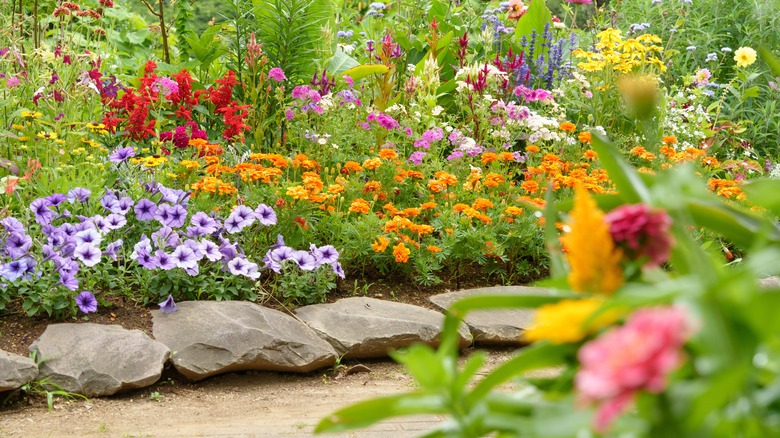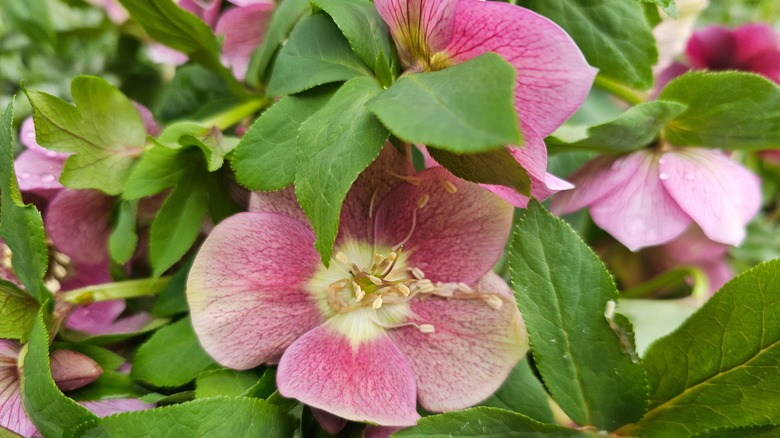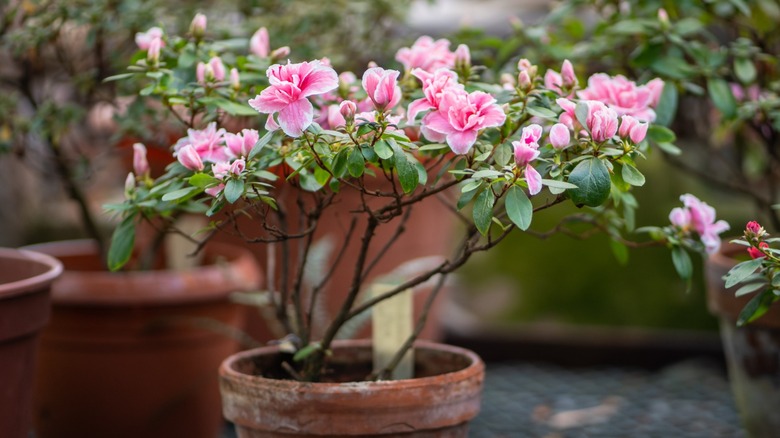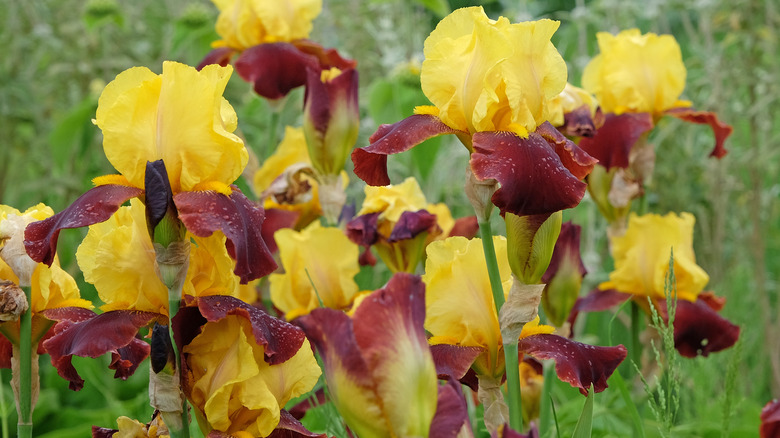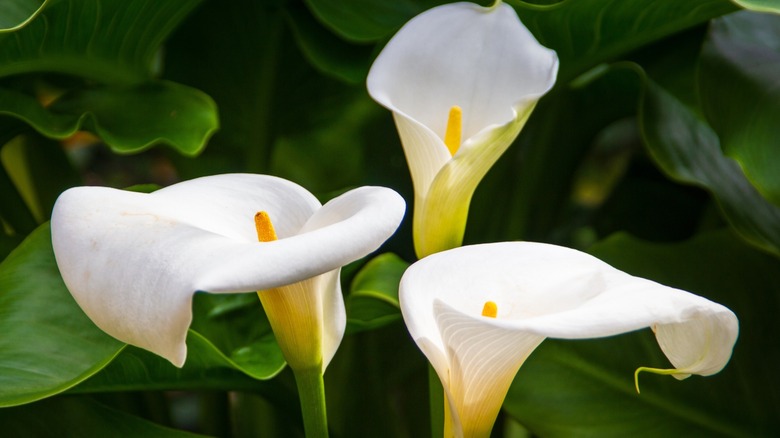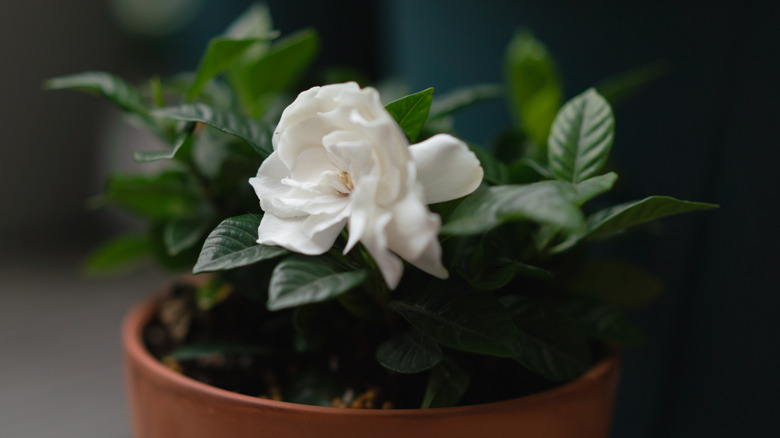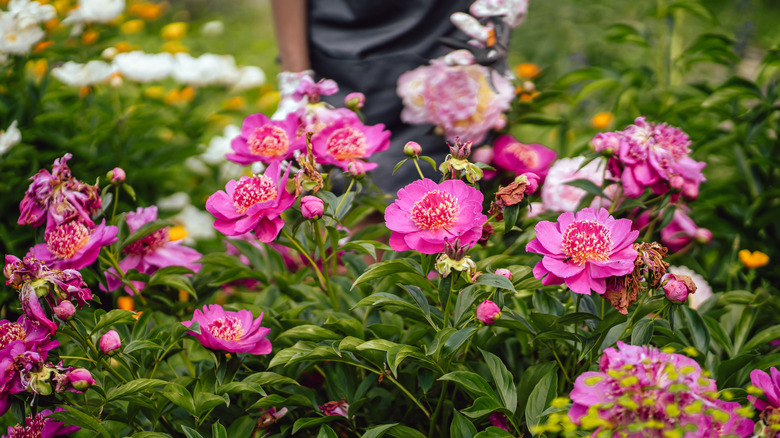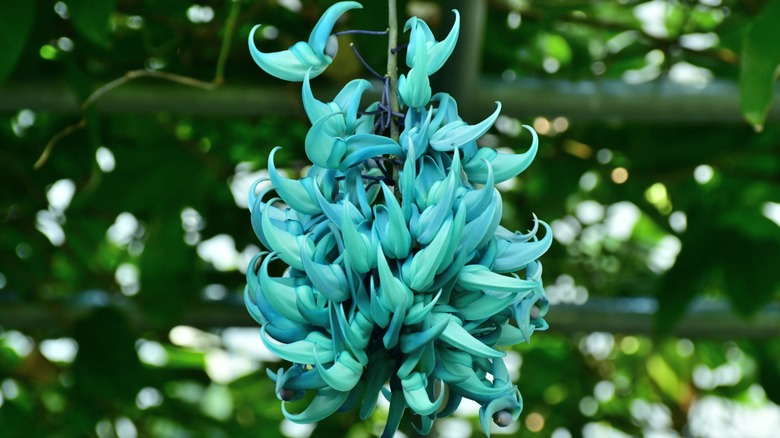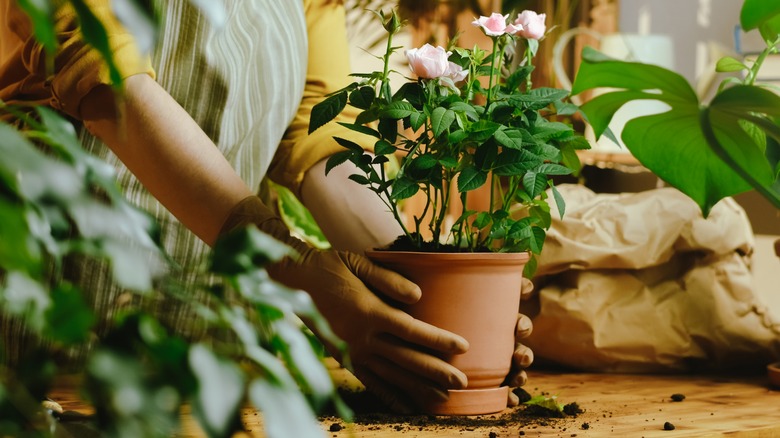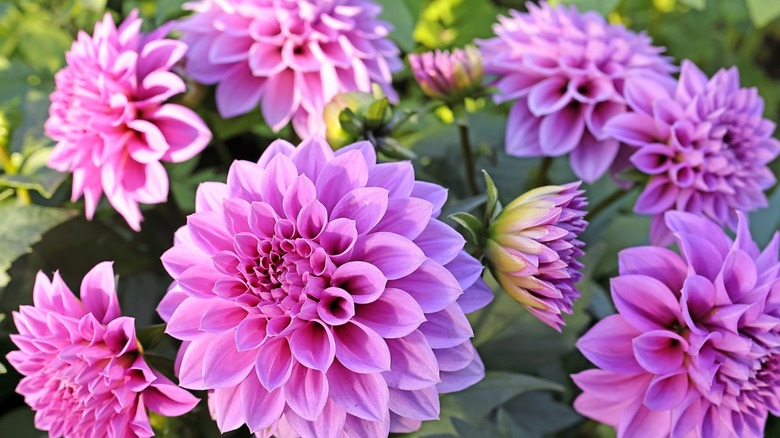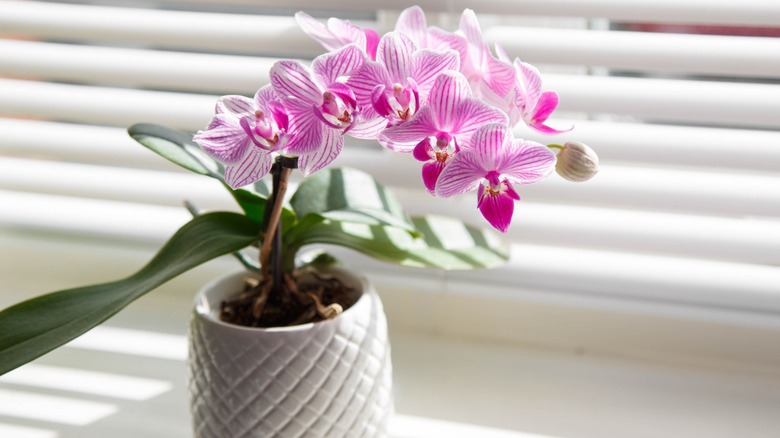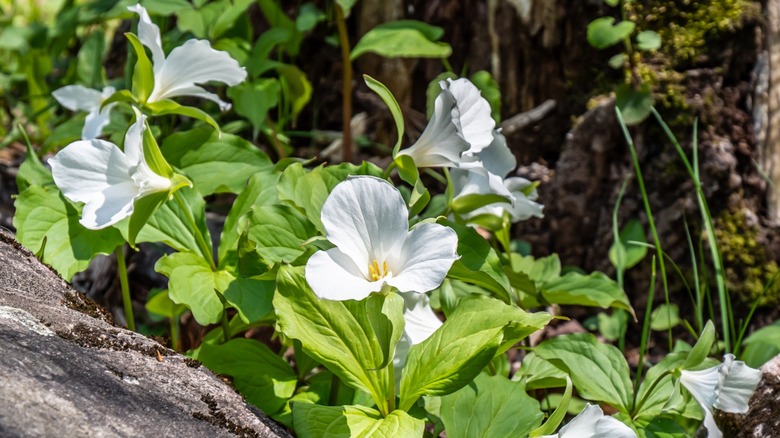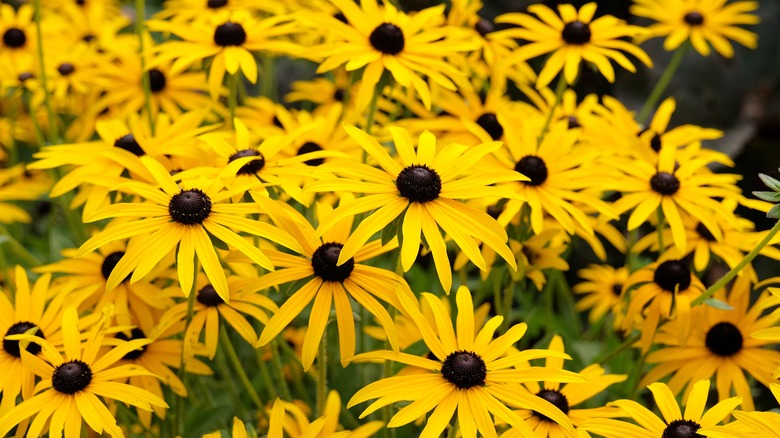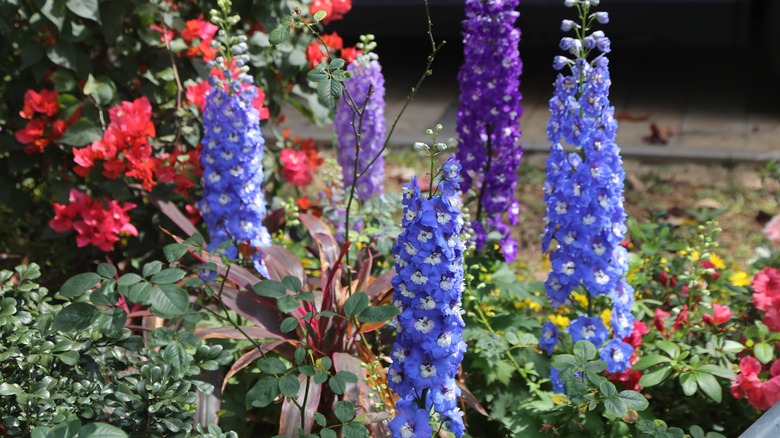These 13 Flowers Are Stunning, But They're Insanely Difficult To Grow
We may receive a commission on purchases made from links.
One of the easiest ways to increase your home's curb appeal is by growing flowers in your yard. But that's not all it can do. Depending on the flower you choose, you can deter pests such as deer and mosquitoes, attract pollinators, improve the growth of other plants, use it for medicinal purposes, and so much more. However, just because you like how it looks doesn't mean hassle-free maintenance and planting. Growing flowers can be an easy task, but not every flower can be treated the same.
Many beautiful blooms are very particular about what they want and how they need to be cared for, making them have specific conditions and requirements that you may find too hard to provide. When looking at the difficulty level of planting, growing, and taking care of flowers, there are many aspects you need to understand about each plant. You'll need to know its preferred USDA hardiness zones, watering amounts, soil preferences, sun exposure times, cleaning and maintenance solutions, pest issues, fungal problems, spacing, and even stalk support needs.
While every plant comes with its benefits and drawbacks, some are just more difficult to handle than others. However, that doesn't mean you can't have them in your garden, especially since many of them are absolutely breathtaking. Instead, it is better to inform and prepare yourself to provide the best growing conditions and care. Before picking any bloom, review these 13 stunning flowers that are insanely difficult to grow.
Hellebores
As a Martha Stewart-approved flower for a classic spring garden bed, you may be tempted to grow hellebores (Helleborus species); however, you may come across some difficulties. While these gorgeous white, green, pink, black, or purple flowers thrive in areas within USDA hardiness zones 3 through 9, they are super picky when it comes to their water intake and colder weather. They need moist soil that isn't pooling because they are susceptible to fungus and root problems. Even though hellebores bloom during the winter, their petals can freeze at very low temperatures and will need protection.
Azalea
Azaleas (Rhododendron species) are a beautiful, colorful plant and there are many different types of azaleas you can grow in your garden. But these gorgeous shrubs are finicky, especially when it comes to their preferred soil. While grown in USDA hardiness zones 4 through 10, these plants need acidic soil or you'll find yellowing leaves, fewer flowers, and trouble growing. Don't place these flowers in just any spot of your flower bed, because they need indirect sunlight or you will soon find them wilting. Some azaleas are also prone to root and crown rot.
Bearded iris
Bearded irises (Iris germanica) come in a wide-range of colors, such as blue, white, purple, violet, yellow, pink, orange, and black. They also come with a load of problems, including root rot and disease. They are prone to overcrowding, insect issues, and fungal diseases, too. If you find fungal spots on the leaves, remove the decaying section to avoid spreading it. When planting bearded irises, stick to USDA hardiness zones 3 to 10 and ensure proper spacing and a regular water schedule. Be mindful of where you plant these flowers, too, since they are toxic to animals.
Calla lily
When it comes to calla lilies (Zantedeschia species), you must follow specific growing requirements for them to thrive. They do best in USDA hardiness zones 8 through 10 with warm, permeable, damp soil in partially shady spots outdoors. Place the tubers in flower beds when the soil warms to around 50 degrees Fahrenheit. However, do not dig too deep or they could develop root rot. Calla lilies are also extremely delicate, making it easy to destroy them during transport or fertilizing. You'll also need to dig the tubers up and store them indoors before freezing temperatures hit.
Gardenia
Gardenias (Gardenia jasminoides) can be tricky because of some of the common mistakes you should avoid if you want healthy gardenias in the garden. The first mistake is temperature. These gorgeous white flowers are very particular, only liking temperatures between 60 to 65 degrees Fahrenheit. Plant them outside this range, and the beautiful, fragrant flowers won't bloom. They grow best in partially shady, acidic soil in USDA hardiness zones 8 through 11. Gardenias are also prone to pests like aphids and spider mites and are sensitive to specific spots in your home, such as near vents and fireplaces.
Peony
There is a big problem that'll make you reconsider growing peonies (Paeonia species and varieties). To start, these stunning flowers are vulnerable to gray and white mold, peony blotch, powdery mildew, root and crown rot, verticillium wilt, and crown gall. While these perennials can be grown in USDA hardiness zones 3 through 9, they do best with moist, porous soil in colder climates. With their voluptuous flowers, they'll need extra growing supplies such as stakes (like this 12-pack on Amazon) to stop them from drooping. You'll also need to deter overcrowding by providing enough space between each one.
Jade vines
The jade vine (Strongylodon macrobotrys) produces a gorgeous turquoise flower that adds a unique hue to any garden. However, most places are not suitable due to their required USDA zones of 10a to 11b. You'll need a humid, consistent-temperature greenhouse for them to thrive, unless you live in ideal states, like California and Florida. If you want to plant these beauties, get ready to deal with their picky soil and moisture needs, since overwatering can cause root rot. Even though jade vines like hot weather, don't leave them in sun too long or it could damage their leaves.
Miniature rose
While roses are generally easy to grow in USDA zones 4 through 11, the miniature rose (Rosa chinensis var. minima) comes with a slew of maintenance problems that make them unsuitable for people who don't want to commit to their care and soil routine. You'll need to provide these miniature plants with enough sunlight, air flow, and high-density air moisture. With their small roots, providing enough water is imperative or you'll see gray leaves and bud and flower wilting. These mini flowers also attract pests such as spider mites and easily develop diseases like powdery mildew.
Dahlia
Without proper care, dahlias (Dahlia cultivars) are known for stem breakage and drooping. As they grow, place stakes around stalks to keep the heavy flowers from hitting the ground. Don't worry — you can prevent dahlias from drooping by following simple staking methods. Since they are grown via tubers in USDA hardiness zones 7 through 10, they are easily susceptible to root rot when given too much water. They prefer well-drained, moist, and warm soil. However, too much humidity can lead to powdery mildew. You'll also need to watch out for a variety of pests from spider mites to deer.
Orchid
When it comes to these delicate flowers, there is a watering mistake you need to avoid with precious orchids. They grow best in many different USDA hardiness zones from 2 through 9. However, these beauties are known for their difficulty, and specific conditions must be met in order for them to thrive. There are many different orchid species and each one needs specific soil, light exposure, and watering amounts, making it hard for some flower lovers to understand what is best for them. You'll also need to keep up with pruning, or plants will struggle to form new blooms.
Trillium
As a native woodland plant, trilliums (Trillium species) are a popular choice for flower beds; however, these white or red flowers need certain soil requirements — damp, porous soil is best – in USDA zones 4 through 9. These plants don't readily bloom, either, easily taking up to seven years before they display their beauty. You also can't leave them under the sun; instead, they need a shady area with small bouts of sunlight hitting them. Since most of these flowers come from woodland areas, you must check state laws before digging or removing any wild trillium.
Black-eyed Susan
While the black-eyed Susan (Rudbeckia species) is a cheery garden flower that keeps a common citrus tree pest at bay, think twice before planting it. It may be a great companion plant that grows in a variety of places in USDA hardiness zones 3 to 9, but it also has many fungal issues that may make it difficult for you to grow it. These vibrant flowers are prone to leaf spot, a fast spreading fungus that can wipe out your plants. The best solution is to ensure there is enough space between each one.
Delphinium
Delphiniums (Delphinium x elatum) may be a stunning sight to see, but they can be difficult to grow because of their specific care needs and many disease and pest problems. These blue flowers need to be in dampish, well-drained soil in USDA zones 3 through 7. While they enjoy sun, they can't stand hotter southern environments and should be placed in a shady spot that only gets sunshine part of the day. They are high-maintenance, and require stands to stop drooping, as well as regular pruning and deadheading. You'll also need to watch out for powdery mildew and slugs.
